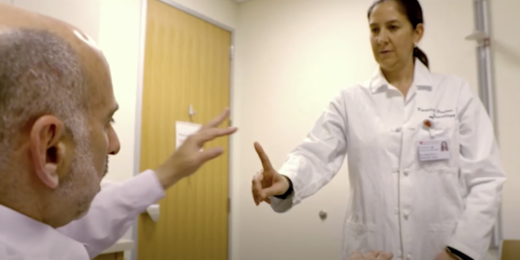At their most dangerous, cancerous tumors cause disease in two ways: they grow and spread. New research published today in Nature Communications shows that, in a severe childhood brain cancer called medulloblastoma, a single signaling pathway underlies the tumor’s ability to do both. The pathway may be a good target for new cancer treatments.
Medulloblastoma, the most common pediatric brain tumor, begins growing in a brain region called the cerebellum and sometimes spreads to the spinal cord. New treatments are badly needed because the current approach — surgery, followed by radiation and high doses of chemotherapy — has severe side effects, researcher Suzana Kahn, PhD, told me.
“For a child with a developing brain, radiation and chemotherapy often result in permanent cognitive and physical disabilities,” said Kahn, lead author of the new study. She was a postdoctoral scholar in the lab of Stanford’s Irv Weissman, MD, when the research was done. And although surgery, radiation and chemo can vanquish the primary tumors in some patients, no treatments exist to target the cancer’s advance to the spinal cord.
In an effort to change that, Kahn and colleagues at several institutions studied signaling pathways suspected of helping the cancer metastasize. One pathway, controlled by a protein known as Notch 1, played a much more powerful role than they expected.
“Notch 1 was just amazing,” Kahn said. “We found out that not only is the Notch 1 signaling pathway responsible for advancement of the primary tumor in the cerebellum, it’s also driving metastases of this tumor to the spinal cord. This is the first evidence that unifies metastases and self-renewal in pediatric brain tumors along the same molecular path.”
Notch 1 sticks out from the cancer cells’ surfaces, particularly on medulloblastoma stem cells, which are especially potent drivers of the tumor’s growth. When it binds certain signals from outside the cells, Notch 1 activates a process that makes the cells less likely to stick to their neighbors — and more likely to move to the spine to form new tumors.
In mice implanted with human medulloblastoma tumors, the researchers were able to slow the progress of the tumors by giving an antibody that sticks to Notch 1 and blocks its ability to respond to other signals. “In this case, we’re not using the antibody to target the cancer cells for destruction; they’re just being used to block the downstream pathway,” Kahn said. Administering the blocking antibody slowed tumor progression and lengthened the survival time of the mice in the study.
The researchers are filing a patent for the use of the antibody in medulloblastoma therapy and are in the early stages of planning a clinical trial in humans. They hope their work will lead to safer and more powerful medulloblastoma therapies.
“It’s absolutely feasible to try in people,” Kahn said.
Photo by Kayla Harris




